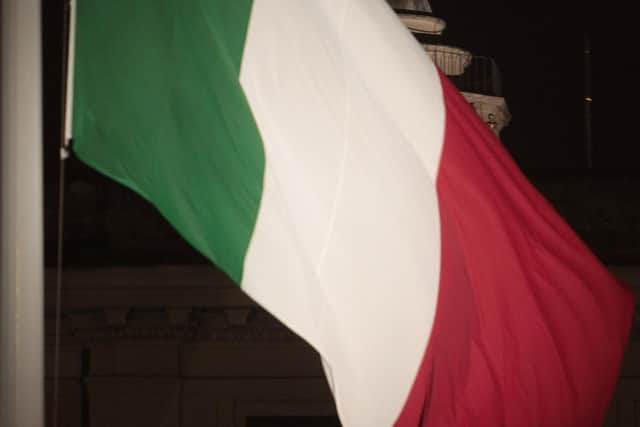Old Italian tale of baptism shows how propaganda and spin is used to further agendas - Bill Carmichael
And it was here over a negroni or two that a barman told me a story so astonishing that initially I thought I had completely misunderstood what he was saying, or he was making the whole unbelievable tale up to pull my leg.
But the next morning I did a bit of internet research and sure enough the basic facts turned out to be true, although the details are fiercely contested more than 160 years later.
Advertisement
Hide AdAdvertisement
Hide AdMy only surprise is that despite reading widely on this topic, I’ve never come across the story before.


To understand what happened we have to go back to the 1850s, before Italy was unified in a single nation state and was instead a patchwork of kingdoms, dukedoms, and city states with an unhealthy dose of foreign interference, mainly by the French and Austrians.
Bologna, like much of central Italy, was part of the Papal States, ruled with a rod of iron by the Vatican.
The then Pope, Pius IX, was considered a reformer with a relatively tolerant attitude towards the small, but thriving Jewish community, although Jews still faced heavy legal restrictions.
Advertisement
Hide AdAdvertisement
Hide AdChristian and Jewish communities were supposed to be entirely separate, for example Jewish families were forbidden from employing Christian servants. But this rule was widely ignored for the practical reason that a Christian servant could carry out essential household tasks forbidden to family members on the Jewish sabbath.
So it was with Momolo and Marianna Mortara who employed a teenage Christian girl, Anna Morisi, to help in the house and to look after their six children.
One day the youngest child, Edgardo, fell seriously ill and Anna was convinced he was going to die, a not uncommon occurrence during a time of high infant mortality.
She feared not just for his life, but also for his immortal soul, and to save him from hell and reserve him a place in heaven, she carried out an emergency baptism in secret.
Advertisement
Hide AdAdvertisement
Hide AdShe sprinkled water on the ailing baby’s head, and whispered in his ear: “Nel nome del padre, del figlio e dello spirito santo.”
Whether this blessing was responsible or not, little Edgardo made a rapid recovery and went on to thrive.
The story might have ended there, but some years later, when the boy was six years old, the Pope’s representative in Bologna, Inquisitor Pier Feletti, found out about the case, and all hell let loose.
Feletti, backed by the Pope himself, decided that because of this clandestine baptism Edgardo was now a Christian and it was forbidden for him to be raised in a Jewish family.
Advertisement
Hide AdAdvertisement
Hide AdUsing the power of the state Feletti removed Edgardo from his parents and sent him to a religious school in Rome.
There was uproar throughout Europe and North America at this turn of events, and one fascinating aspect of this story is the way both sides used modern ideas of propaganda and spin, and the power of the popular press, to further their agenda.
The family, backed by the Jewish community, and Christian Protestants in the UK and USA, portrayed these events as a little boy who desperately wanted to return to his family and cried each night for his mother. In other words a family torn apart by religious fanaticism.
On the other side, the Catholic press argued that Edgardo was blissfully happy, saw the Pope as his new father and wanted to dedicate his life to converting Jews, including his own family, to Christianity.
Advertisement
Hide AdAdvertisement
Hide AdI don’t know which version is true, but my experience of small children tells me the former is much more likely than the latter.
Either way, Edgardo never returned home. He became a priest and died in Belgium in 1940, aged 88.
But the scandal had wider implications and severely weakened the Papacy. Crucially, the French Emperor, Napoleon III, shifted from opposing Italian unification to supporting it.
Papal rule ended for good in Bologna in 1859, Italy was unified in 1861, and in 1870 the Kingdom of Italy captured Rome from the Pope. The Papacy, once one of the most powerful forces in Europe, never recovered its previous supremacy.
And that is how an illiterate servant girl, a splash of water on a baby’s head, and a secret whispered blessing, changed the course of European history.